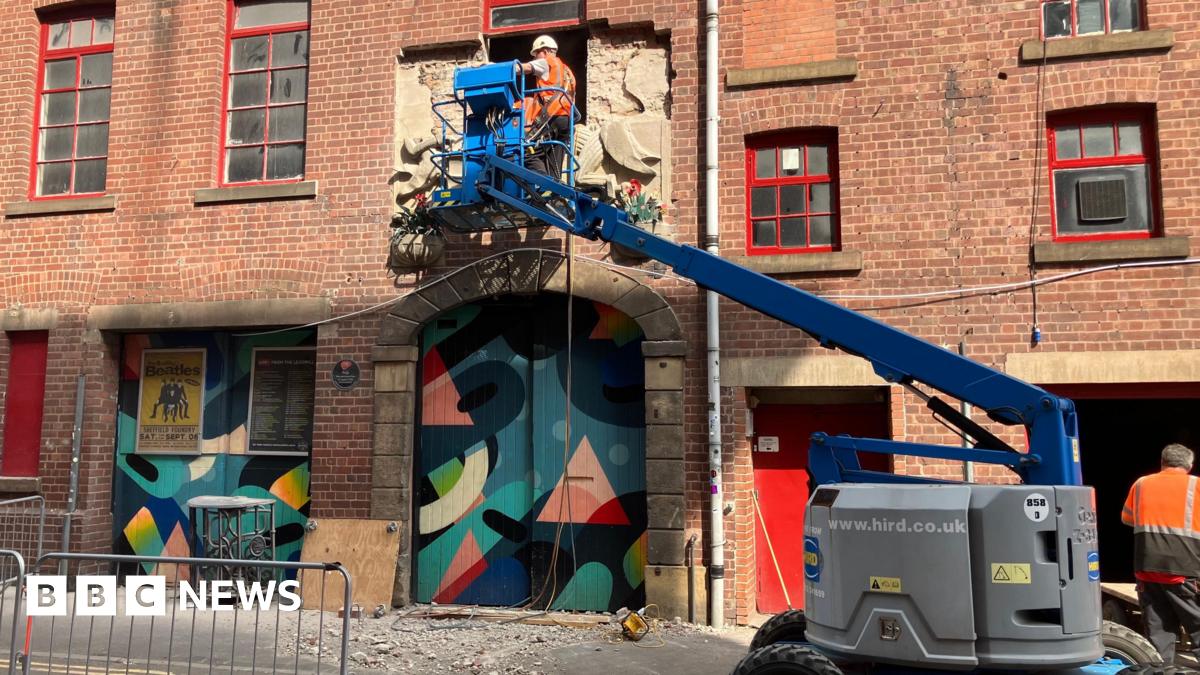A council spokesperson said “temporary measures” had since been agreed with the operators “to ensure public safety following the removal of some of the stonework”.
“This is our top priority, ensuring the site is safe, secure and poses no risk to the public,” they added.
“Going forward, we will be assessing what enforcement powers are available to us and this process will begin next week.”
The spokesperson said their request for the artwork’s removal to be halted had also been agreed to.
Mr Disley said he and Mr Winter had answered an advert in The Guardian for a sculpture commission in 1987 and were chosen to create the piece after an interview with Adrian Vinken, who formerly ran the venue.
“It’s part of the fabric of the building,” he said.
“Ownership passes on. It’s not as though it’s got nothing to do with what’s going on inside. I would love to see it reinstated.”
Electric Group, who own the building, said they planned to continue running it as a concert and nightclub venue.
A refurbishment is planned once they take control of the site, which appears to have been gutted, on 15 August.
February 2026 has been given as a reopening date under a new name, Electric Sheffield.
An Electric Group spokesperson said they were “really disappointed to see the removal of a much-loved Sheffield artwork”.
“It’s been part of the city’s fabric for years and has meant a lot to visitors and locals alike.”
The venue’s neon Leadmill sign has now been removed, although a planning application to install two new neon signs with the lettering ‘Electric’ and ‘Electric Sheffield’ has been submitted to Sheffield City Council.
The council’s spokesperson said planning permission was not required for the removal of the neon sign.
